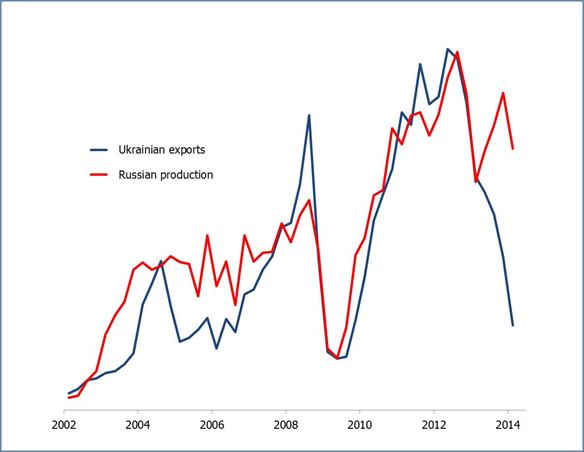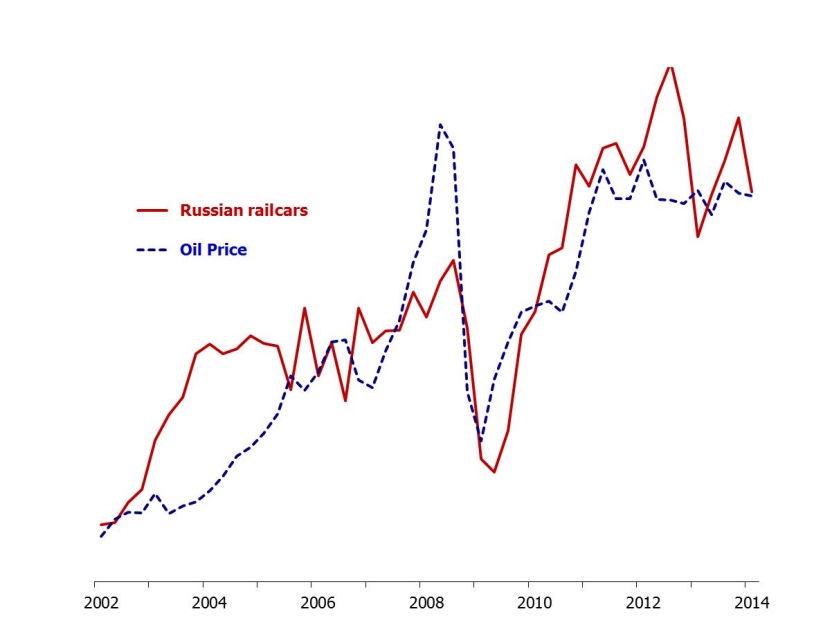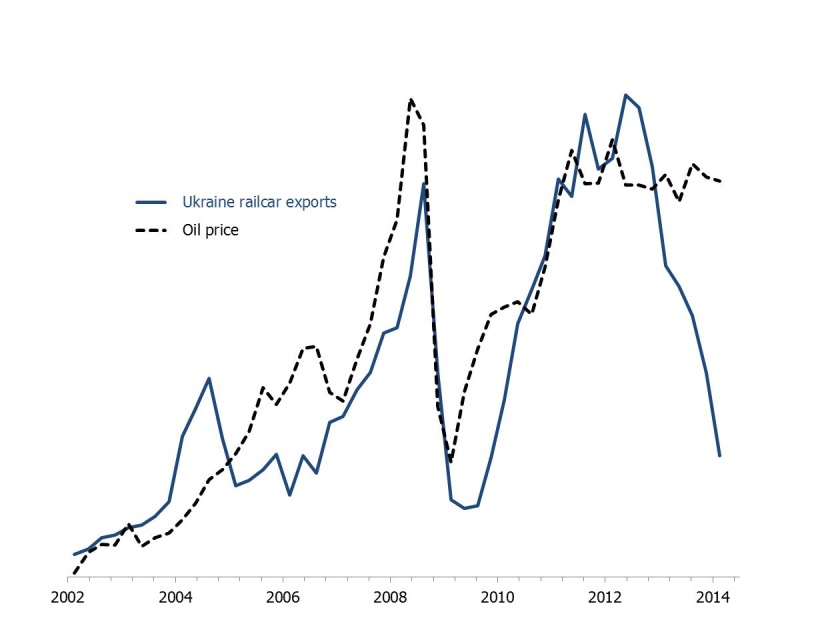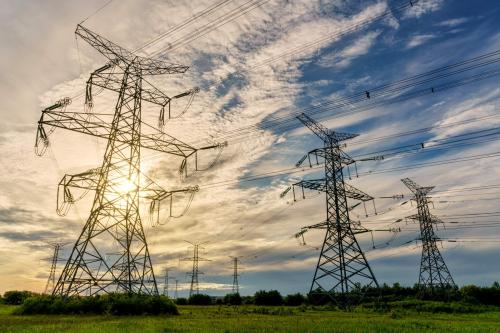Authors’ Note: This article is based on a section of our paper, “Beyond the Sanctions: Russia, the West, and Ukraine.”
Almost forgotten in the discussions of the conflict between Russia and the West is what happens to Ukraine. The answer to that question, like so many other problems, depends on how much each side is willing to pay for their preferred outcome. It is important therefore to understand the costs of the potential outcomes for Ukraine and how those costs will be apportioned between Russia and the West.
The West sees itself as defending Ukraine against Russia, and since it won’t wage military war against Russia it has two main ways to do that, both economic. The first is to shore up Ukraine’s huge economic vulnerabilities, mainly by helping Ukraine pay its bills and plug its deficits. The IMF has pledged $17 billion to that end, the EU a nearly equal sum. The second way the West is defending Ukraine is to levy economic sanctions against Russia to deter it from further aggression.
From Russia’s standpoint, things are more complicated, but in the end there, too, it comes down to economics. Russia sees Ukraine as a front in a war being waged by the West against Russia. Through its actions in Ukraine, Russia is telling the West to stop using the country as a staging ground for operations against Russia. Russia sees sanctions as a yet another weapon in the West’s war. Russia knows it is far inferior to its adversaries in terms of economic size and strength (the combined GDP of Russia’s NATO and EU adversaries is roughly 15 times that of Russia’s), so it has opted not to engage in tit-for-tat responses to Western sanctions. Instead, it resorts to “asymmetric” measures. It looks for weak spots. One obvious such weak spot is Ukraine’s economy. The Russia attitude is, if the Western coalition wants to use Ukraine against us, let them see how much it will cost.
It is clear to most observers that the West would not be able to defend Ukraine economically from a hostile Russia. Russia is in a position to do far more damage than the West can defend against or repair. It’s always true that it’s easier to undermine a country economically than to build it up. It’s easier to destabilize than stabilize. It is perhaps less evident that the West would have a very hard time stabilizing the Ukrainian economy even if Russia weren’t around to make mischief. The simple fact is that Russia today supports the Ukrainian economy to the tune of at least $5 billion, perhaps as much as $10 billion, each year.
When we talk about subsidies, we usually think of Russia’s ability to offer Ukraine cheap gas — which it does when it wants to. But there are many more ways Russia supports Ukraine, only they are hidden. The main support comes in form of Russian orders to Ukrainian heavy manufacturing enterprises. This part of Ukrainian industry depends almost entirely on demand from Russia. They wouldn’t be able to sell to anyone else. The southern and eastern provinces of Ukraine are dominated by Soviet-era dinosaur enterprises similar to Russia’s. They were all built in Soviet times as part of a single, integrated energy-abundant economy. They could be sustained only thanks to the rents from Soviet (overwhelmingly Russian) oil and gas. Russian subsidies have continued to maintain the structure in the post-Soviet era. Because most of these subsidies are informal, they do not appear in official statistics. (In fact, not even Putin talks about them, though it might be to his advantage to do so, because acknowledging the existence of hidden Russian subsidies to value-destroying Ukrainian enterprises would expose the fact that the same thing goes on, on a much greater scale, with their Russian counterparts. They, too, are not producing real value.)
The subsidies are hidden, but there are ways to tease out the underlying reality of how Russia’s resource rent is being shared with Ukraine. A good example is Ukraine’s railroad equipment manufacturing sector. The Ukrainian railroad locomotive and rolling stock producers have been an integral part of the Soviet/Russian rent-distribution chain since the Soviet era. They were built and sustained with Russian oil and gas rents. Virtually all of their export shipments go to Russia. (Again, remember that nobody else wants what they produce.) The series of charts below illustrate the close relationship between Russia’s oil and gas rents and demand for the output of both Russian and Ukrainian producers. Figure 1 shows that Russian demand for Ukrainian rail cars is highly correlated with Russian domestic demand. (Yes, the two lines diverge dramatically at the end. We’ll get to that in a minute.)

Figure 1. Trends in production of railroad rolling stock in Russia
and exports of railroad rolling stock from Ukraine to Russia, 2002-2014
Russian domestic demand for railway cars in turn depends on the flow of oil and gas rents to Russia. (Figure 2.) That rent flow is driven by the world price, which Russia obviously cannot determine. Hence, the fact that Ukrainian production looks exactly like Russian production demonstrates how tied together this sector is between the two countries. It is one integrated sector in the Russian rent distribution system. This part of Ukrainian heavy industry was being treated by the Russians on an equal basis with their own manufacturing sector. That is, it was up until the second quarter of 2013. At that point, the Russians stopped ordering Ukrainian railcars and locomotives. They cut off the Ukrainian sector from the rents. The rents had not declined, and part of the rent kept going to the Russian producers (Figure 2). But orders to Ukraine collapsed. Figure 3 (where the oil price is a proxy for Russian rents) makes the point.

Figure 2. The world oil price and Russia’s production of rail freight cars

Figure 3. The world oil price and Ukraine’s exports of rail freight cars
A couple of more points are worth noting. First, this drop in Russian orders is costing Ukraine a great deal of money, more than three billion dollars in annual revenue. The plants are now effectively shut down. There are also knock-on effects to the metals producers, mining and power sectors. At the same time, the rolling stock producers are only part of the huge Ukrainian dinosaur manufacturing sector that is supported by Russian orders. Defense industries account for a bigger share. Ukraine’s portion of the Soviet defense industrial complex was about one-fourth the size of the Russia’s. But it was much more highly concentrated geographically. Approximately 96 percent of Ukraine’s defense industry employment was in four cities: Kiev, Kharkov, Dnepropetrovsk and Nikolayev. One out of every four people in the labor force in those cities worked in defense plants. That’s why some recent statements by Putin about plans to eliminate imports of defense goods sounded ominous in certain parts of Ukraine. At a meeting with his own defense industry executives on May 14, Putin said: “[Because of Western sanctions] we have new circumstances to address now — we need to replace imports. … [W]e need to do everything we can to have everything that our defense industry needs produced here on our own soil, so that we will not be dependent on anyone else for any of the new weapons systems we are delivering to our armed forces.”
If the West were somehow able to wrest full control of Ukraine from Russia, could the United States, the other NATO nations, and the EU replace Russia’s role in eastern Ukraine? The IMF, of course, would never countenance supporting these dinosaurs the way the Russians have. So the support would have to come in the way of cash transfers to compensate for lost jobs. How much are we talking about? The only known parallel for the amount of transfer needed is the case of German reunification. The transfer amounted to 2 trillion euros, or $2.76 trillion, over 20 years. If Ukraine has per capita income equal to one-tenth of Germany’s, then a minimum estimate is $276 billion to buy off the east. (In fact, since the population size of eastern Ukraine is larger than East Germany’s, this is an underestimate.) It is unthinkable that the West would pay this amount.
Notice that Russia, by contrast, could survive the cutoff of Ukrainian industry. The Soviet Union provided for dual sources for virtually every component needed for its defense industry. For every producer located in Ukraine, there was an actual or potential twin far off to the east in the Urals and beyond. Russia could just implement more import substitution (as Putin announced in the quote above). This is economically inefficient, but it is what every country does for national survival. In the case of substituting for imports from Ukraine, the chief beneficiaries would be the very defense enterprises and other heavy equipment manufacturers in Russia which Putin has already declared to be a priority as recipients of rent.
Economically, Russia can afford losing Ukraine. What Russia could not afford is to win Ukraine, that is, to be saddled with not only its current costs of up to $10 billion a year for eastern Ukraine but the much larger amounts that would be needed to support the rest of the country if they were cut off from its western markets.
The key point here is that there can be no viable Ukraine without serious contributions from both Russia and the West. Of all the options for Ukraine’s future, a Ukraine exclusively in the West is the least feasible. A Ukraine fully under Russian control and with severed links to the West is, unfortunately, possible. But it is in no one’s interest — not Russia’s, not the West’s and certainly not Ukraine’s.
In purely hypothetical terms, we can imagine a range of futures for Ukraine. Picture them arranged on a line extending from left to right (or think of these as west to east). At the far left of the line (the western end) is a Ukraine fully integrated into the EU and NATO and completely independent of Russia. Let’s call it “Ukraine as Poland.” At the opposite end is a Ukraine that is thoroughly under Russian control, either fully or partially incorporated into the Russian Federation. Let’s call that “Ukraine as Malaya Rossiya” (Little Russia). In between are variants of a neutral Ukrainian state that avoids all actions that can be perceived by the Russians as threatening. (It would undoubtedly also be highly federalized, but at least it would be territorially intact.) This one we’ll call “Ukraine as Finland.” Schematically, the options for the future would look like the table below. The text suggests some of the basic features of each option. This is, of course a stylized picture. (And apologies to the Poles and Finns who might be offended by use of their brands. It’s just for shorthand and not intended to resemble the real countries.) What is important is to recognize that each of these outcomes for Ukraine depends on a particular kind of Russia that maps into specific cells in the table. You cannot, in other words, posit a scenario for Ukraine without specifying a “Russia condition.” We examined the issue of the “particular Russias” in our March 2009 note, “The Missing Quadrant.”
Hypothetical Ukrainian Outcomes
Note that the outcomes listed in the table are only hypothetical, not necessarily realistic. For starters, the outcome labeled “Ukraine as Poland” — that is, a NATO-affiliated Ukraine — is simply impossible under any real-world conditions. Neither of the two alternative “Russia conditions” for that scenario can be met. Russia isn’t going to become an enthusiastic EU and NATO member itself, nor will it return to being the bankrupt, dependent, and compliant Russia of the 1990s, no matter what sanctions are applied. That leaves only Finland-2 and Malaya Rossiya as options. But there is an important catch.
The “Ukraine as Poland” option is not only infeasible, choosing it alters the remaining choices. One might reason that it would perhaps turn out to be worth the effort since it would strengthen the West’s bargaining position and force the Russians to settle for the middle option, Finland-2. Unfortunately, examination of the “Russia condition” for the middle option shows that not only would a push for Poland-2 (pulling Ukraine into NATO) fail in its objective; it would have the consequence of ruling out the middle outcome completely. It therefore guarantees the least favorable one, “Malaya Rossiya.” (To put it in somewhat more formal terms: the attempt to choose the “Ukraine as Poland” option collapses the choice set in the table, leaving only the “Malaya Rossiya” option as feasible.)
For those who want to punish Russia and nothing else, that’s the answer: hand over Ukraine to the Russians and let them turn it into Malaya Rossiya. It would suck Russia dry. For anyone who really cares about Ukraine, there is, like it or not, only one option: the one in the middle.




Commentary
Ukraine: A Prize Neither Russia Nor the West Can Afford to Win
May 22, 2014